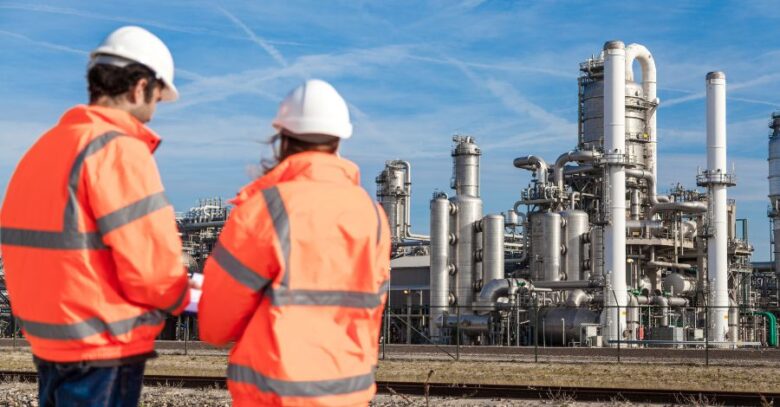Process safety remains a top priority in industries worldwide. In this regard, one underestimated tool is the safety retrospective. By systematically reviewing past events, practices, and near misses, organizations can extract invaluable insights. By turning the mirror back on their own processes, they can identify latent issues and prevent serious incidents in the future.
Safety retrospectives not only improve safety measures but also foster a positive safety culture. It encourages teams to learn from past experiences and apply these lessons in designing more robust safety systems.
Therefore, it’s evident that regular reflection through safety retrospectives is not a mere administrative exercise. It is a significant aspect of process safety management that fuels continuous improvement, contributing towards a safer and more productive work environment.
The Value of Safety Retrospectives
Safety retrospectives bring a plethora of benefits. Primarily, they allow teams to pause, reflect, and learn from past experiences, instead of rushing to the next task. This in-depth analysis can unearth hidden issues in procedures, promoting preventive actions over reactive measures.
Furthermore, retrospectives lead to more informed decision-making. They present an opportunity to gather and analyze data, leading to insights that can significantly improve safety procedures. This data-driven approach minimizes guesswork and paves the way for consistent improvements.
Lastly, safety retrospectives cultivate a sense of collective responsibility. As everyone comes together to review past events and propose improvements, it creates an environment where safety becomes a shared value, not just a compliance requirement.
Understanding the Retrospective Process
Implementing a safety retrospective is not a random activity. It follows a defined structure to ensure that the review process is comprehensive, objective, and productive. Initially, the scope of the retrospective is defined, determining which events or processes to review.
Subsequently, relevant data about the chosen event or process is gathered. This could include incident reports, process logs, witness accounts, and more. A thorough and honest collection of data is key to the effectiveness of the retrospective.
Finally, the collected data is analyzed to draw out findings and develop actionable steps. The analysis should not be focused on laying blame but on understanding the underlying issues. The result of this analysis then forms the basis for improvements, ultimately enhancing process safety.
Case Studies: Learning from the Past
A tangible way to appreciate the value of safety retrospectives is through case studies. They provide practical examples of how this reflective practice has influenced safety improvements. In many cases, post-incident retrospectives have led to the development of safety protocols that have prevented similar incidents from recurring.
For instance, the Piper Alpha oil rig disaster in 1988 was an unfortunate event that led to a significant loss of life. The subsequent retrospective identified failures in safety management, contributing to the development of more rigorous offshore safety regulations.
Likewise, the Texas City refinery explosion in 2005 led to a comprehensive retrospective. It highlighted numerous underlying issues, such as faulty equipment, inadequate safety systems, and a compromised safety culture. These findings have since guided improvements in refinery operations across the industry.
Engaging All Stakeholders
A successful safety retrospective relies on the participation of all stakeholders. This ensures a diverse range of perspectives and a comprehensive understanding of the events under review. It can include anyone from frontline workers, who can provide firsthand accounts, to top management, who can offer strategic insights.
Moreover, engaging all stakeholders promotes accountability. It communicates the message that everyone plays a part in maintaining safety, fostering a collective commitment to safety.
Furthermore, stakeholder engagement fosters a culture of open communication. By providing a platform where everyone is encouraged to voice their opinions and concerns, it breaks down barriers and encourages a free exchange of ideas. This is instrumental in uncovering deeper issues that may not be immediately apparent.
Retrospectives and Safety Culture
Safety retrospectives play a significant role in nurturing a positive safety culture. By promoting transparency and learning, they foster an environment where safety is valued and prioritized. This cultural shift is as important as any procedural improvement, as it ensures that safety measures are followed consistently and conscientiously.
Furthermore, retrospectives help cultivate a non-blaming culture. They emphasize that the objective is not to pinpoint individual errors, but to identify systemic issues that can lead to incidents. This promotes trust among employees, encouraging them to be more forthcoming about safety concerns.
Lastly, by involving everyone in the retrospective process, organizations send a clear message that safety is everyone’s responsibility. It cultivates a sense of ownership and commitment towards safety, which is essential in creating a sustainable safety culture.
Tools and Techniques for Effective Retrospectives
Applying structured tools and techniques is essential in executing effective safety retrospectives. One commonly used tool is the “5 Whys” method, which involves asking “why” multiple times to trace back the root cause of an incident. By identifying the underlying issues, organizations can take proactive steps to prevent similar incidents in the future.
Another effective technique is the “Cause and Effect” or “Fishbone” diagram. This graphical tool is used to sort and relate factors contributing to an incident, visually mapping out complex causal relationships to better understand the incident.
Finally, structured meetings, or “post-mortems,” are key to conducting retrospectives. These meetings should be facilitated by a neutral party to encourage open discussion and involve all relevant stakeholders to ensure comprehensive analysis.
Common Challenges in Safety Retrospectives
Despite their value, safety retrospectives can face various challenges. For instance, the perception of retrospectives as a “blame game” can hinder open discussion. To overcome this, it’s essential to establish that the focus is on systemic improvement, not individual faults.
Another challenge is the bias that can affect the retrospective process. Confirmation bias, where people focus on information that confirms their preconceptions, and hindsight bias, where people perceive events as predictable after they have occurred, can distort analysis. This can be mitigated by having a neutral facilitator and encouraging diverse perspectives.
Lastly, there may be practical constraints, such as time and resources. Organizations need to prioritize retrospectives as an essential part of safety management and allocate sufficient resources to conduct them effectively.
Enhancing Retrospectives with Technology
The application of technology can enhance the effectiveness of safety retrospectives. For example, digital tools can help in the accurate recording and storing of retrospective data, making it easier to review and analyze over time. They can also facilitate remote participation, enabling a wider range of stakeholders to contribute.
Artificial Intelligence (AI) and machine learning can offer significant improvements in data analysis. By identifying patterns and correlations that may be overlooked by humans, these technologies can provide deeper insights into safety incidents.
Moreover, Virtual Reality (VR) and Augmented Reality (AR) can be used for immersive retrospective reviews. These technologies can recreate incidents, providing a more detailed understanding of events and helping to identify potential improvements.
Conclusion
Safety retrospectives are a powerful tool for enhancing process safety management.
By promoting reflection and learning, they enable organizations to continuously improve their safety performance.
Overcoming challenges and leveraging tools, techniques, and technology can further enhance the effectiveness of safety retrospectives.
Ultimately, the key to successful retrospectives lies in an organization’s commitment to a safety culture that values learning from the past to create a safer future.




